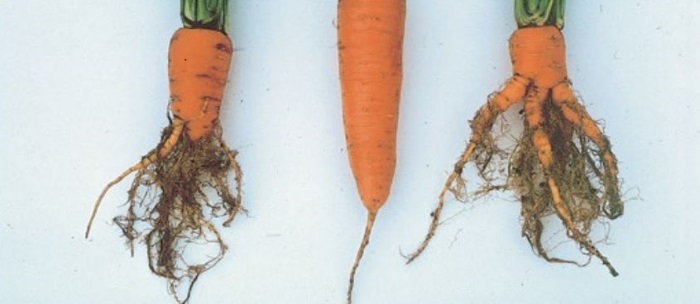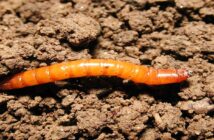A review into both UK and overseas research suggests alternative ways to control free living nematodes for carrots and parsnips and has recommended areas to focus for future R&D.
Dr Roy Nielson, a nematologist at the James Hutton Institute has led a review into the management of free-living nematodes after calls from growers for AHDB Horticulture to horizon scan the research.
The review highlights action agronomists and growers could consider in short and medium term, such as tillage, rotations and monitoring, to help improve management of free-living nematodes. And Dr Nielson made other recommendations for longer-term research funding in areas such as biofumigation, biological control and resistance breeding.
Dr Nielson found evidence that the introduction of set-aside in the 1990’s may have helped these nematodes species to increase by providing a stable environment combined with a diverse host range.
Once land in set-aside was returned to production, shorter and often inappropriate rotations boosted their numbers further. If they have gone unnoticed until recently it’s because treatments aimed at other pests, notably potato cyst nematode, kept them under control.
The recent supply problems with one of the industry’s widely used nematicides is a timely reminder of just how vulnerable carrot and parsnip growers are when it comes to controlling nematodes.
There is a lack of proven alternative crop protection products but other strategies, such as longer rotations, are hampered by a shortage of suitable land and the industry’s reliance on rented sites.
The UK is significantly behind the rest of Europe and North America when it comes to developing alternative management strategies for the so-called ‘free-living’ nematodes, species that don’t spend any part of the life-cycle inside the plant but which nevertheless cause considerable damage.
Cathryn Lambourne, AHDB Crop Protection Scientist said: “This is an important piece of work in horizon scanning. What research there is in free-living nematodes has highlighted smart solutions that growers can take away immediately and implement but also allow AHDB Horticulture to look to the future in research and development.”
Dr Nielson adds: “The limited research in the UK has been focused on the potential that field-grown mustards offer, but any single solution replicates the current situation of reliance on synthetic chemicals and is unsustainable in the long term.”
Options for Control
One relatively straightforward option is to extend the break between each carrot and parsnip crop, while excluding from the rotation other crops that are also vulnerable to free-living nematodes.
At the very least, monitoring for the presence of free-living nematodes can aid decisions about which fields to drill. But the advance of precision farming technology has brought a new interest in monitoring for nematode population ‘hotspots’ within field too.
Organic soil amendments have a potential role in nematode management but the effects are inconsistent.
Mustard-based biofumigants have been shown to suppress free-living nematodes but as with soil amendments, have shown inconsistent results in UK trials.
Resistance breeding, even with the assistance of modern genetic mapping techniques, requires significant economic investment, with any benefits for growers long term.
Advice for Growers
Where possible, increase the length of rotation – even one year may be beneficial
Ensure the rotation includes crops that are poor of free-living nematodes hosts
Monitor by soil testing
Consider including a cover crop in standard rotation.




